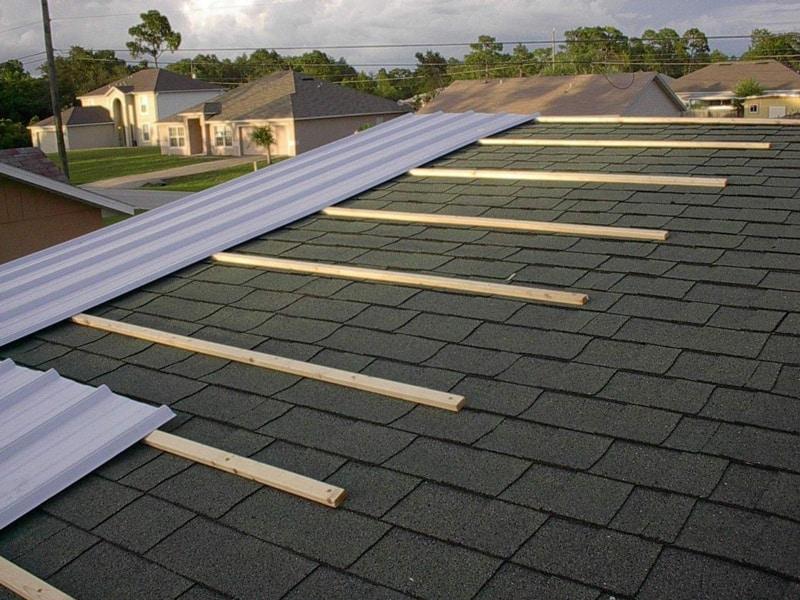The prospect of upgrading to a metal roof can be enticing, given its durability, energy efficiency, and modern aesthetic. However, a common question arises when considering this upgrade: can you put a metal roof directly over shingles? This article delves into the feasibility of installing a metal roof over existing shingles, examining the advantages, challenges, and key considerations associated with this roofing method.

Understanding the Process
Installing a metal roof directly over shingles, known as a “metal-over-metal” or “metal-over-shingle” installation, involves placing the metal roofing panels on top of the existing shingle layer. While this method might seem convenient, it necessitates careful planning and adherence to certain guidelines to ensure a successful and long-lasting installation.
Advantages of Metal-over-Shingle Installation
Cost Savings: One of the primary advantages is cost savings. Installing a metal roof over existing shingles can eliminate the labor-intensive and costly process of shingle removal. This can significantly reduce both material and labor expenses.
Time Efficiency: Metal-over-shingle installation is generally quicker compared to a full tear-off and replacement. This means less disruption to your daily routine and a faster completion of the roofing project.
Insulation Benefits: The additional layer of shingles can provide some level of insulation, potentially contributing to improved energy efficiency in your home.
Challenges and Considerations
While the idea of installing a metal roof over shingles presents benefits, there are critical challenges and considerations to address.
- Weight: Adding a new layer of metal roofing on top of shingles increases the overall weight on the roof structure. It’s essential to ensure that the structure can bear the additional load. Consulting a structural engineer is advisable to assess the feasibility.
- Uneven Surface: Shingles can create an uneven surface that might affect the appearance and proper installation of the metal roofing panels. Addressing any irregularities in the existing shingle layer is crucial to achieving a smooth and seamless metal roof installation.
- Ventilation and Moisture: Proper ventilation is essential for maintaining the health of your roof and preventing moisture-related issues. Metal-over-shingle installations can affect the ventilation system, potentially leading to moisture buildup and other problems. Adequate ventilation solutions must be implemented.
- Building Codes and Regulations: Local building codes and regulations vary, and some jurisdictions might not permit metal-over-shingle installations. It’s crucial to check with local authorities to ensure compliance before proceeding with the installation.
Conclusion
The decision to install a metal roof directly over shingles involves a careful assessment of the advantages, challenges, and considerations. While this method offers cost savings, time efficiency, and potential insulation benefits, it requires proper planning and professional guidance. Adequate structural evaluation, addressing surface irregularities, ensuring proper ventilation, and adhering to local regulations are essential steps for a successful metal-over-shingle installation. Before embarking on this roofing journey, consult with roofing experts to determine if this method is suitable for your specific circumstances. With the right approach, you can achieve a durable, energy-efficient, and visually appealing metal roof that stands the test of time.



Leave a Reply